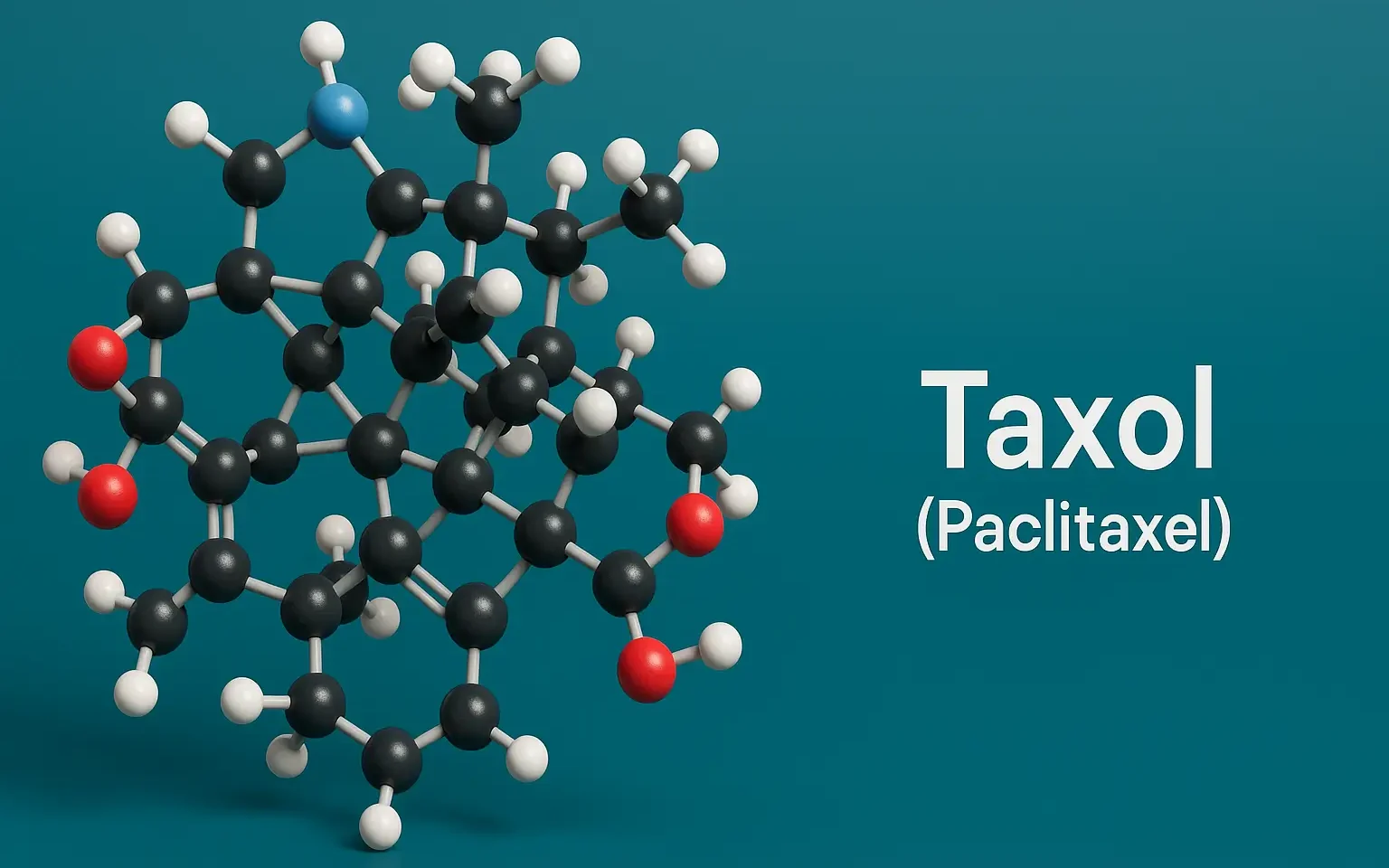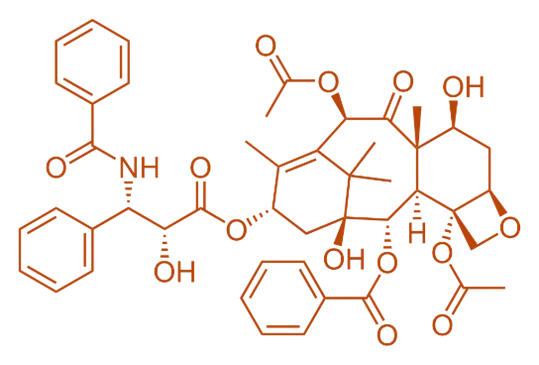Industrial Production of Taxol (Paclitaxel)
Source:
- Taxol is a complex diterpenoid alkaloid originally isolated from the bark of the Pacific yew tree, Taxus brevifolia.

Advertisements
Extraction Process of Taxol (Paclitaxel):
- Harvesting: Historically, Taxus tree bark was harvested destructively, but sustainable methods have been developed.
- Sustainable Production: Nowadays, taxol is also obtained from cultivated Taxus cell cultures and needle extraction, which do not require tree destruction.
- Extraction: Solvent extraction using organic solvents like dichloromethane or methanol.
- Isolation: Techniques such as chromatography (e.g., preparative HPLC) isolate paclitaxel from other taxanes.
- Purification: Recrystallization and further chromatographic steps ensure pharmaceutical-grade paclitaxel.
Semi-Synthetic Production:
- Biosynthetic Pathways: Semi-synthesis from precursor compounds like 10-deacetylbaccatin III, sourced from the needles of European yew (Taxus baccata), offers a scalable and sustainable production route.
Advertisements
Total Synthesis:
- Chemical Synthesis: Due to taxol’s complex structure, total synthesis is challenging and not commercially viable, though it has been achieved in research settings.
Estimation of Taxol (Paclitaxel)
Analytical Techniques:
- HPLC: The primary method for quantifying paclitaxel in plant extracts and pharmaceutical formulations.
- LC-MS/MS (Liquid Chromatography-Tandem Mass Spectrometry): Offers high sensitivity and specificity for detailed analysis.
- NMR Spectroscopy: Used for structural confirmation and purity assessment.
- UV-Vis Spectroscopy: Utilized for routine monitoring based on specific absorbance characteristics.
Advertisements
Utilization
Pharmacological Applications:
- Anticancer Agent: Paclitaxel is a potent chemotherapeutic used to treat various cancers, including ovarian, breast, lung, and pancreatic cancers.
- Mechanism of Action: It stabilizes microtubules, preventing cell division and inducing apoptosis in rapidly dividing cancer cells.
Other Uses of Taxol (Paclitaxel):
- Research: Employed in studies related to cell division, microtubule dynamics, and cancer biology.
- Combination Therapies: Used alongside other chemotherapeutic agents to enhance efficacy and reduce resistance.
Click Here to Watch the Best Pharma Videos
Advertisements


